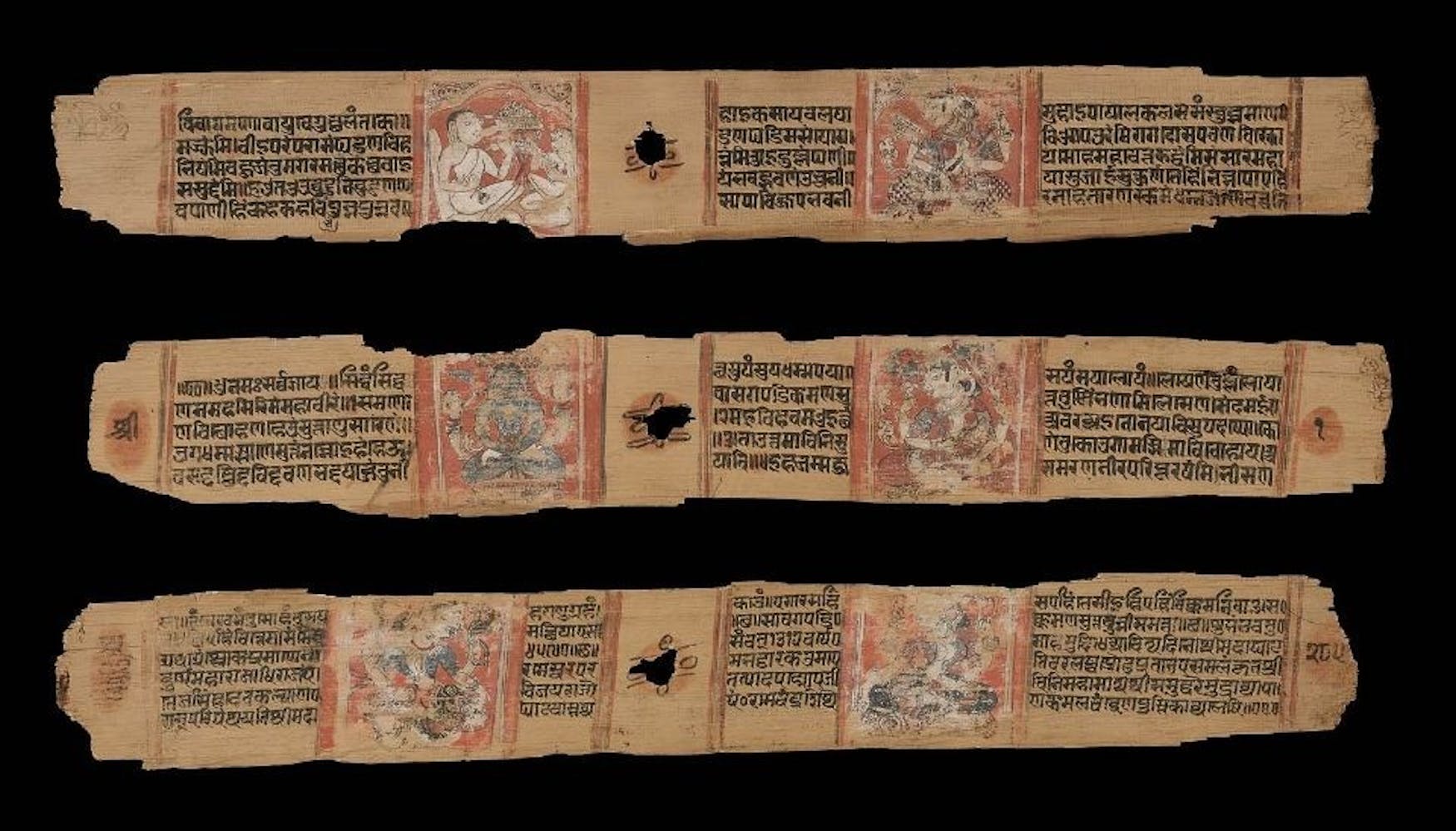MFA shows rarely exhibited ancient Jain artwork
Tucked away in the Art of Asia section of the Museum of Fine Arts in Boston, the South Asian department is highlighting a beautiful collection of Jain art in the exhibition Pure Souls: The Jain Path to Perfection. In the 6th century, Jainism developed in India as a religion with a strong emphasis on nonviolence. The religion evolved into two different sects: Svetambara and Digambara. In the exhibition, artwork from the Svetambara sect is displayed.
In Pure Souls, a combination of rarely shown, early illustrated manuscripts and cloth paintings reveal the sacred, devotional world of Jainism. A few devotional statues from the religion are also included in the exhibition.
Followers of the religion believe in the 24 enlightened Jain teachers, or Jinas, who came to Earth to attain personal liberation and aid others in their path to spiritual enlightenment. Jains also commemorate five major life events: conception, birth, renunciation, enlightenment and liberation. In the exhibition, images of the last Jina’s life cycle are displayed.
The exhibited manuscript from the Svetambara text, Kalpa Sutra, primarily depicts the life of Mahavira through the various stages of his life. In the dark enclave of the gallery, the viewer is encouraged to walk clockwise to experience the five stages of Mahavira’s life
The Jain manuscripts resemble modern-day comic strips. The manuscripts were made of either palm leaf or paper. As such, the loose folios and palm leaves were constructed into long, narrow shapes. As a result of the limited space on the folios, on each is only a brief paragraph of text of about five to six lines and a small rectangular or square image beside the text.
The images in the manuscripts lacked scale and dimensions, but the artists made up for the size with their exquisite use of colors. Jain art of the time would predominantly use the colors red and gold. However, artist would also incorporate shades of yellows, pinks, reds, greens and blues. The pigment, despite the passage of years and obvious wear, is still vivid and luminous.
For example, in the image “Indra Praising Mahavira” from Devasano Pado, the blue is bright and rich. In fact, the blue pigment was created from lapis lazuli. In the visually complex image, a seated Indra is momentarily captured in rapture as she praises Mahavira. Body contorted, arms raised, Indra’s head is seen from profile view. She is surrounded by repeating circular, undulating forms that symmetrically frame her body.
Even in these small images, the level of details is surprising and encourages one to peer closer and closer so as to discern all the different strokes and markings that were employed to create the image. These images are similar to the miniature style of painting. However, there is a slight lack of precision in the brushwork of the Jain pieces. Peer closer at an image, and you will see at times how not all strokes are the same when the artist is trying to evoke symmetry. The uneven strokes do not, however, detract from the beauty of the images.
Pure Souls also showcases statues and pilasters. Flanking one of the entrances are two pillars from a Jain temple from the 10th and 11th centuries. The two pillars are mirror images of each other and depict one large Jina, standing in the kayostarga, “abandonment of the body,” posture, surrounded by smaller Jinas. The kayostraga pose is a relaxed manner of standing or laying down in which the body is at complete ease and symmetrically aligned. The surrounding figures are all depicted in a seated, meditation position. In statues, Jinas are only depicted in one of these two poses.
The beautiful, informative show that displays the sacred texts and manuscripts of a religious minority is on display until Nov. 30. The exhibition is an otherworldly experience as one is swept into the colorful, vibrant and rich culture of the Jain tradition.



Please note All comments are eligible for publication in The Justice.